Author: LEONARD FELDMAN
I feel as though I am a witness to the birth of a new audio era. After all of the demonstrations at trade shows here, in Japan, and in Europe where the revolutionary compact digital audio disc player had been demonstrated by others, I finally have a Compact Disc player in my own lab, complete with an assortment of Compact Discs.
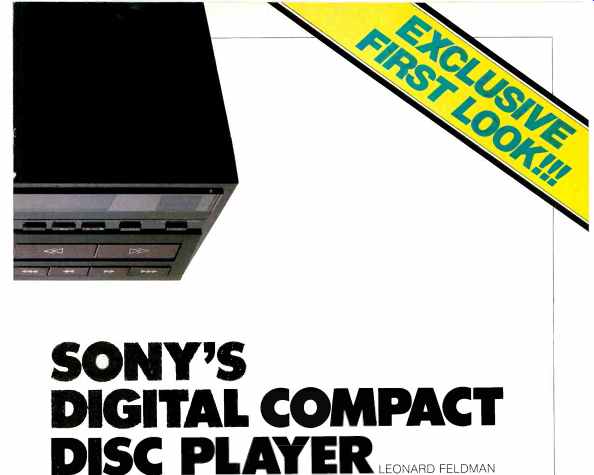
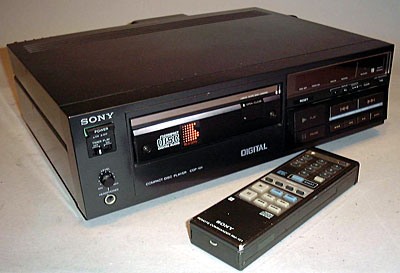
There are, of course, many unknowns still to be resolved. Sony was unable to tell me when their elegant Model CDP-101 will be available in the U.S. The best estimate is that it will be in early to mid 1983. Neither could Sony tell me exactly how much it will cost, although an announcement made in early September in Tokyo pegged the Japanese price at 168,000 yen which, at a current conversion rate of about 250 yen to the U.S. dollar, puts the price for Japanese audio enthusiasts at around $670.00. Judging by the way other Japanese electronic products are priced, you can figure that the price will be about 25% to 30% higher when the player becomes available here.
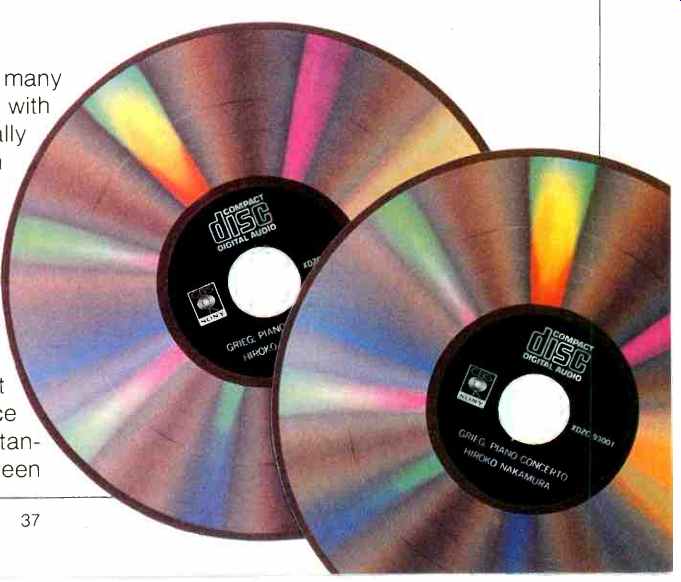
While availability and price may be of interest to retailers and audio enthusiasts waiting to snatch up the first shipment of DAD players to arrive in the near future, my main interest was to listen and to measure. I had been impressed by the sound quality of these small digital audio discs so many times that I wanted to see for myself, with a Sony Esprit system, if they were really as good as I had thought. To put it in as few words as possible: They are-and then some! So much has been written about the compact digital audio disc, a joint development of Sony and Philips of Holland, that I don't think I need repeat the basic principles of operation of the disc and its player. It has been argued by some that once digital players and discs become standard, there will be no difference between one player and another, nor will there be a difference in sound quality between audio systems. In short, these arguments suggest that I and others like me will be out of work! I doubt, however, that this will occur, for while the disc format has been standardized and probably will be ultimately adopted by all audio hardware and software manufacturers, the way in which manufacturers of players choose to implement these standards with innovative product features and conveniences will still vary from unit to unit. After all, LP records are standardized too, but no one would say that all turntable systems are alike. Further, there are still analog portions in all of these players, which can easily sound different.
In the case of the CDP-101, Sony really has put its best foot forward and produced a fitting player for the beginning of the true digital disc era. Everything about its black front panel connotes elegance and space-age electronics. After the power switch at the upper left has been turned on, the digital display area at the right of the disc-loading drawer displays the numeral 1. Touch the "Open-Close" button on the disc drawer, and it opens smoothly. Then, simply drop the disc you want to play into the drawer (no centering, no spindle to fumble with) and touch either the "Play" button or the "Open/Close" button once again.
The drawer now closes slowly, centering the disc on the internal drive spindle. If you pressed the "Play" button, disc play begins in a few seconds. If you closed the drawer by means of the "Open/Close" button, you have the option of touching the "Play" button to initiate play, or you can depress one of the automatic music sensor buttons (forward, in this case) to select the number of whichever track of the disc you desire.
The album notes for each disc list the numbers for the tracks and the program material of each one. If, during the playing of a disc you wanted to go back to an earlier track, you would press the "backward" automatic music sensor button. In addition to displaying the track chosen (or that is being played), the digital display area also indicates when the player is searching for a selected track. A flashing red light shows that a disc is being loaded and brought up to playing speed. The digital display tells how many minutes and seconds of a selected track have already been played, and a touch of the "Time Remaining" button indicates playing time remaining on the side of the disc. A "Reset" button below the display returns the laser-optical pickup to the first selection on the disc. Three repeat-play buttons offer several options, specifically, repeat of the track being played, repeat play of the entire disc or repeat of specifically designated material (from one point to another) on the disc.
"Play" and "Pause" buttons perform pretty much the same functions as they do in a cassette deck, and are labeled with the now-standard arrows and double-vertical lines. Four additional buttons-two with double arrows pointing in each direction and two with triple arrows-allow fast-forward or fast-reverse play while listening to the program material. These functions are completely analogous to the fast-scan functions now found on most videotape recorders, except that as the buttons are held down, there's no audible change in pitch of the music, just a fast sampling of what's on the disc so that you can elect to stop at a desired spot. While line audio output levels from this unit are fixed in level (and rather higher than I normally would expect for connection to the high-level inputs of a preamplifier or integrated amplifier or receiver), a headphone jack at the lower left of the front panel is tied into a level control just above it which does permit you to adjust headphone volume.
A slim, hand-held wireless (infrared) remote-control module, powered by two AA batteries, duplicates just about all of the front-panel functions, including the memory repeat options, fast audible scanning and track selection.
In addition, a set of buttons numbered 0 to 9 allows you to "direct access" any track number on a disc without having to "step" through lower or higher numbers to reach that track. According to Sony, this remote control unit (RM-101) will be included with the CDP-101 at no extra cost.
Analog signals are extracted from the rear of the CDP-101 via a pair of phono-tip jacks, but there are other, less obvious switches and terminals to be found back there as well. There is, for example, a sync output which works in conjunction with several of Sony's logic-IC cassette decks. When the "Pause" button on the disc player is pressed, a pause occurs in a recording you might be dubbing onto a cassette (though I can't imagine why anyone would want to dub from digital disc, with its 90 dB plus of legitimate dynamic range, to an analog cassette tape). There's a "beep" on-off switch which works in conjunction with the hand-held wireless remote control unit that is supplied with the player. When this switch is on, the system beeps to indicate that remote instructions have been received. Another switch, labeled "Anti-Shock," is, I was told, intended to add stability to the laser tracking system. However, in all my tests I couldn't detect any difference in operation with or without the switch turned on. Finally, a multi-terminal socket labeled " Accessory Port" is intended for connection of a more elaborate remote control unit which Sony markets as a separate product.
Some of the intricacies of the optics and electronics of the CDP-101 are described in the sidebar for those who would like to know more about how a laser pickup can be made to track pits that measure approximately 0.5 µm across by 0.11 µm deep and are inscribed in tracks that are only 1.6 µm apart. If you're like me, you'll probably want to read that description after you find out how the lab measurements of performance turned out and, even more importantly, how the music reproduced from compact digital discs sounded.
I had hoped to have a specially made test disc containing various test signals for my use in the lab. Unfortunately, I am still waiting for that test disc which is now winging its way from California to my lab in Long Island, courtesy of the U.S. Postal Service.
Deadlines being what they are, I decided to present data sent to me by Sony. I have absolutely no reason to believe that these data are in any way doctored or fudged, since it is entirely consistent with what I would expect from a compact digital audio system employing a 16-bit quantization code, a 44.1 kHz sampling rate, and an error-correction scheme as sophisticated as the one being used for this disc system and player.
Frequency response, plotted in Fig. 1, was transcribed from a graph supplied by Sony, along with a plot of separation versus frequency. Separation is rated above 90 dB for all but the very highest audio frequencies (above 15 kHz) where it decreases slightly to 88 dB at 20 kHz. This same graph also depicts S/N as 96 dB below 0-dB reference level.
Figure 2 is a plot of total harmonic distortion versus frequency. THD, according to Sony's measurements, is under 0.003% from 60 Hz up to 8 kHz, increasing slightly above that frequency until it reaches just over 0.01% at 18 kHz, the highest frequency at which THD was measured. As I write these numbers, I find it difficult to remember that I am talking about a disc player! No data were supplied regarding wow and flutter, probably because it is not measurable. In a digital disc system, the term wow and flutter is meaningless, since the recovered digital code is first stored in the system's memory and then released "bit by bit" in a precisely timed order governed by a quartz clock.
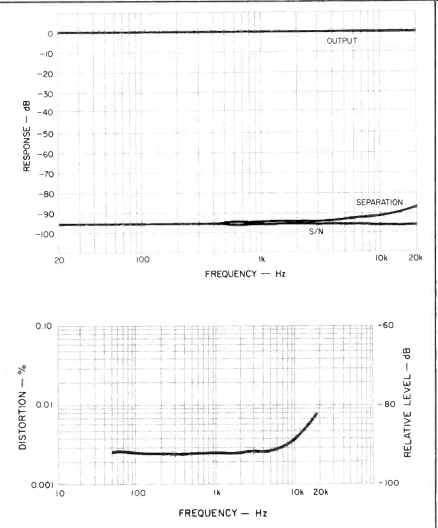
Fig 1-Frequency response, separation, and noise level. Fig. 2-THD vs. frequency.
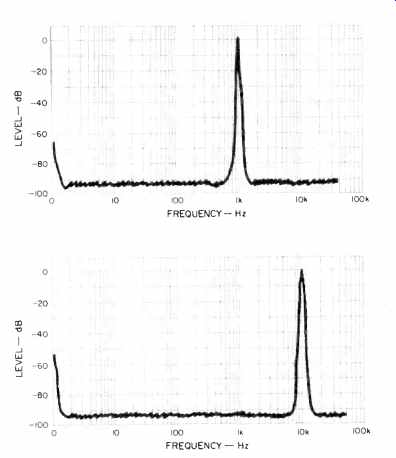
Fig. 3-Spectrum analysis of 1-kHz output signal. Fig. 4-Spectrum analysis
of 10-kHz output signal.
Figure 3 is a drawing of a spectrum analyzer plot observed at one of the line output terminals of the CDP-101 while a test disc was reproducing a constant 1-kHz tone. As you can see, if there were any harmonic distortion components generated, they occurred well below the noise level which was already down some 95 dB or so below the peak reference level of the 1-kHz spike seen at the left of the plot.
Finally, in Fig. 4, the same sort of spectrum analysis was conducted by Sony using a 10-kHz constant tone.
Again, no harmonics are visible, and the noise floor remains well above 90 dB below the 0-dB reference level.
With results such as these for the player, I'm not sure that my test equipment would have been up to the job of measuring the performance of the CDP-101 even if the test disc had arrived in time, but I'm going to give it a try when that disc does arrive and let you know the results next month.
I was fortunate enough to get my hands on seven different compact digital disc albums. Some of the selections on these albums were obviously dubbed from analog master tapes, but even these were so free of any kind of background noise that they could, for the first time, be thoroughly enjoyed as music. There's a cut of the beginning of Also Sprach Zarathustra by Richard Strauss, with the Boston Symphony conducted by Ozawa, that delivers the gut-massaging opening bass note with a depth and clarity that I never thought possible for any music reproduction system. But never mind the specific notes or passages. Listening to the complete soundtrack recording of "Chariots of Fire," the images and scenes of that marvelous film were recreated in my mind with an intensity that would just not have been possible if the music had been heard behind a veil of surface noise and compressed dynamic range.
My listening was not confined to the classics. A popular repertoire sampler demo disc from Polygram, like its classical counterpart, contains a mix of digitally mastered as well as good analog-mastered selections. The Moody Blues' "Nights in White Satin" and Abba's rendition of "Head Over Heels" were particularly outstanding.
Not all of my reactions concerning the music were positive, but what negatives I had were totally unrelated to the new digital disc format or to the player.
Rather, it became quite obvious to me that recording techniques are going to have to be reevaluated as we enter the digital disc era. This applies particularly to the pop-music genre, where tricks of the trade (multitrack, overdubbing, flanging, time delay, and exaggerated EQ) have all grown up in an analog world. They don't always work in the clean and totally transparent world of digital, which is totally unforgiving of sloppy or uncalled for studio tricks and gimmicks. While I'm not suggesting that all the tricks of the pop recording trade must be abandoned, many of them are going to have to be used much more carefully.
I'm a little concerned about another aspect of this coming digital disc introduction. Unfortunately, certain record companies have been selling what are purported to be "digital discs" for several years now. Of course, you and I know that what is meant by the term "digital disc," which has been emblazoned on the jackets of these completely analog vinyl groove-type records, is that they were made from digital master tapes. But will the average record collector understand the difference, or will he or she say that "This is nothing new-digital discs have been around for years"? I hope the minute size of these true digital discs, the totally new players that will soon be available, and the sheer magnificence of the sound delivered by Compact Discs will enable enough people to realize that here is something really new and revolutionary.
As for availability of discs, by the time the players become available in this country, there should be at least 300 album titles available (about two-thirds from the Polygram group of European recording companies, the rest from CBS-Sony of Japan). Beyond that, I can only hope that other record companies-most of whom have been complaining of downturns in sales--will see the importance of this new development and make the capital investment needed to start producing these discs.
One final bit of good news. The price in Japan for a Compact Disc works out to about $15.00. When you consider that the discs contain an hour or more of music, that's actually a bit lower than the price of a present-day so-called "audiophile" disc of the direct-to-disc or digitally mastered variety. The analog record has been with us in essentially the same form for 105 years, and it's not something any of us is willing or ready to discard easily. But after my experiences with this first digital audio disc player and the few sample discs that were loaned to me, I am convinced that, sooner or later, the analog LP will have to go the way of the 78 shellac record. I can't tell you how long the transition will take, but it will happen!
---------------------
COMPACT DISC: OPTICS AND ELECTRONICS
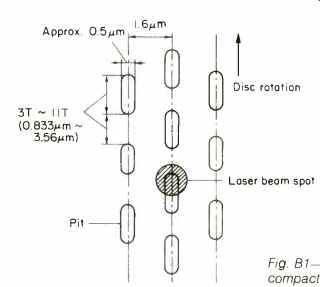

Fig. B1-Dimensional details of the compact digital audio disc.
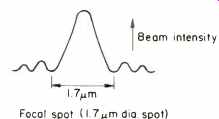
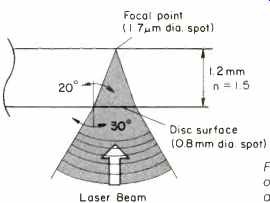
Fig. B2-The refracting, transparent layer of the disc reduces the laser
beam spot diameter to 1.7 µm.
The basic structure of the now standard digital audio disc is detailed in the diagrams of Fig. B1.
Since the laser beam impinges upon the disc from its underside, it passes through most of the thickness of the disc before focusing on the actual signal surface, which is beneath a plastic protective film near the upper surface of the disc. The 1.2-mm transparent layer of the disc plays an important part in the pickup process. The refractive index of the transparent cross-section is 1.5, so that while the spot size of the laser beam impinging upon the outer surface of the disc is around 0.8 mm in diameter, through refraction it becomes as small as 1.7 µm by the time it reaches the signal surface as illustrated in Fig. B2. One of the important consequences of this refraction process is that a bit of dust or a scratch on the outside surface of the disc is effectively only a tiny fraction of its real size when its "shadow" reaches the signal surface. In fact, dust particles or scratches of less than 0.5 mm cause no error in signal readout.
Information tracks consist of tiny pits impressed in tracks running outward from the inside of the disc at a pitch of 1.6 µm. To put it perhaps more dramatically, 60 tracks of such pits would fit in the width of one groove of a conventional LP record! Obviously, to trace such minute information tracks accurately requires an extremely advanced optical system.
A simplified optical pickup system is illustrated in Fig. B3. A laser diode (LD) is placed at the focal point of a collimator lens having a relatively long focal length. The emitted laser beam passes through the collimator lens to make its rays parallel and is then brought into focus on the signal surface after passing through another objective lens. Between the two lenses is a Polarization Beam Splitter (PBS), a kind of prism incorporating dielectric membranes that serves to direct the beam from the laser diode to the signal surface and the reflected beam from the surface to the photo diode (PD). The arrangement horizontally prevents polarized beams that go onto the signal surface from being diverted to the photo diode, while vertically polarized beams which reflect from the signal surface are diverted and reflected to the photo diode. The quarter-wave plate (OWP) controls the polarization of the outgoing and returning beams, ensuring that all the returning light is deflected to the photo diode.
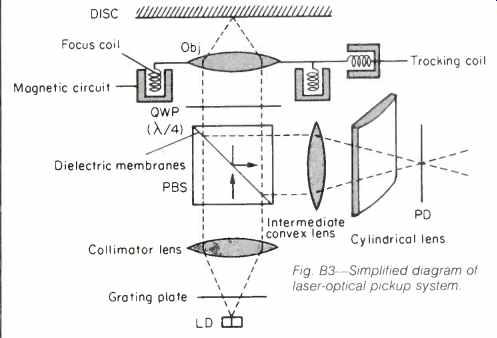
Fig. B3-Simplified diagram of laser-optical pickup system.
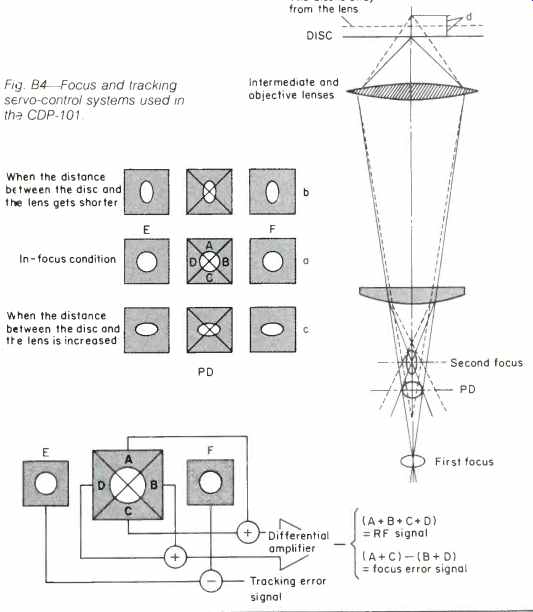
Fig. B4-Focus and tracking servo-control systems used in the CDP-101.
Depth of focus employed in the system is only ±2 µm. Vertical irregularity of the typical digital disc as it rotates is more than 100 times that great. Therefore, a servo system must be used to move the objective lens up and down so that the laser beam remains in perfect focus; the diagrams in Fig. B4 explain how focus is maintained. The "beam" diagram at the right of this figure shows how the vertical component of the beam is concentrated on the focal point of the convex lens; the cylindrical lens has no effect upon this beam component. The horizontal beam component is refracted as it passes through the cylindrical lens and makes a focal y spot at a shorter distance. If the photo diode, PD, is positioned at the point where the vertical component of the beam intersects with the horizontal component of the beam, impinges a circular pattern upon the photo diode. When the distance dth between the c surface W and the convex lens is increased, both focal points come closer to the lens, as indicated by the dotted lines in the beam diagram. The pattern becomes elliptical, as shown in the upper three squares of the diagram at left in Fig. B4. Similarly, when the distance between disc surface and the convex lens is reduced, the pattern becomes elliptical again, but rotated by 90° in terms of its major and minor axes.
A focus error-control signal is obtained by dividing the photo diode into four areas (A, B, C and D), illustrated in the lower as diagram of Fig. B4. Next, the output of the differential amplifier must be supplied to a lens drive system so that the focus error-control signal ([A + C] [B + D]) always remains zero. In that way, the signal surface always remains in focus with respect to the laser beam impinging upon it.
Extra patterns E and F seen in the diagrams of Fig. B4 are used to keep tracking "on target" in a left-to right sense. A spot of laser light must be produced on each of these three patterns. The grating plate in Fig. B3 serves this purpose; its diffraction effect yields the required three spots from a single laser diode.
The relative position of the spots on the signal surface is depicted in Fig. B5. If the main spot, M, deviates from the signal track, an imbalance arises between the portion of spot "E" which overlaps a pit and that of spot "F." The value of signal picked up at the photo diode obtained by subtracting "F" from "E" represents the left-to-right tracking error signal. This signal ultimately drives the tracking coils represented in Fig. B3, moving the objective lens bilaterally with respect to the direction of the beam.
The control system just described is known as the "three-spot method." The lens drive mechanism is an electromagnetic device similar to the voice-coil of a loudspeaker.
The drive mechanism as a whole is also referred to as a two-axis system since it is capable of adjusting the lens position in two planes, up and down and from left to right.
No attempt will be made here to give you a full account of how the electronics of the CDP-101 operates. Suffice it to say that the system uses three Large Scale Integrated circuits which make up the demodulator and error correction circuitry. These, together with a 16k RAM (random access memory) constitute the so-called "black box" which is the essence of the electronics converting digital signals back to analog signals that can be fed to the high-level inputs of any audio amplifier. For those who would like to delve into the matter a bit further, reproduced here, as Fig. B6, is a block diagram of the entire CDP-101 player, from disc to recovered audio signal. L.F.
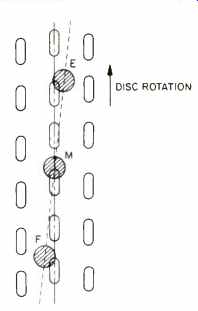
Fig. B5-"Three-spot" laser beam system used to servo-control
lateral tracking of pickup.
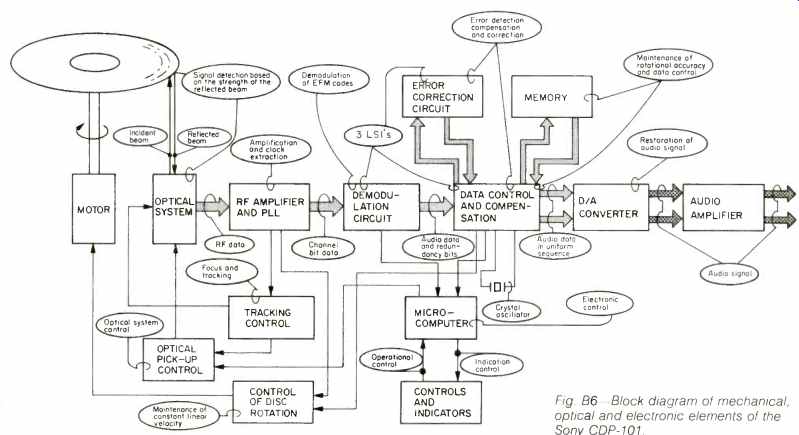
Fig. B6-Block diagram of mechanical, optical and electronic elements
of the Sony CDP-101.
---------------------
=============
SONY CDP101 DIGITAL AUDIO DISC PLAYER
Published Specifications
PLAYER
Number of Channels: 2.
D/A Conversion Format: 16-bit linear.
Sampling Frequency: 44.1 kHz.
Quantization: 16-bit linear.
Signal Readout Method: Optical, using semiconductor laser with 0.78-µm wavelength.
Frequency Response: 5 Hz to 20 kHz, ±0.5 dB.
Dynamic Range: Greater than 90 dB. S/N Ratio: Greater than 90 dB.
Channel Separation: Greater than 90 dB at 1 kHz.
Harmonic Distortion: 0.004% at 1 kHz.
Wow and Flutter: Not measurable.
Line Output Level: 2.0 volts, nominal.
Dimensions: 14 in. (335 cm) W x 4 1/8 in. (105 cm) H x 12 3/4 in. (325 cm) D. Weight: 16.7 lbs. (7.6 kg). Price: See text.
DISCS
Diameter: 4.72 in. (120 mm).
Thickness: 0.047 in. (1.2 mm).
Rotation: Counterclockwise (viewed from readout side).
Track Pitch: 1.6 µm.
Linear Playing Speed: 1.2 to 1.4 m/sec (47 1/4 to 55 1/8 ips).
RPM: Approximately 500 to 200 (constant linear velocity).
Playing Time Per Side: Approximately 60 minutes.
Price: See text.
Company Address: Sony Dr.. Park Ridge, N.J. 07656. USA.
=============
(Audio magazine, Nov. 1982)
Also see:
Sony CDP-101 Digital Audio Disc Player--Postscript (Jan. 1983)
Sony Car CD Player: On the Road (July 1984)